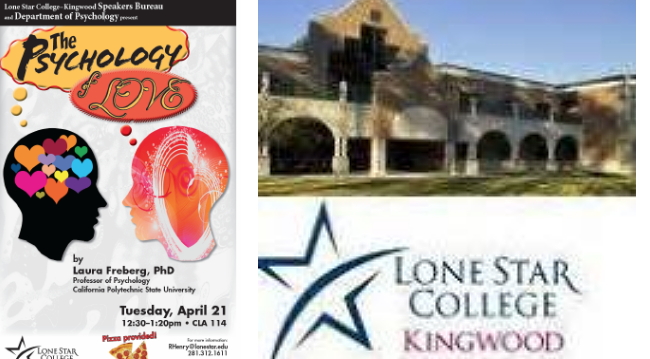Here is what I am reading today:
“How common is “p-hacking” and what does it mean for science? I spoke to Megan Head, of the Division of Evolution, Ecology and Genetics at the Australian National University in Canberra, Australia. She’s the first author of “The Extent and Consequences of P-Hacking in Science”, published in PLOS Biology on March 13th.”
risk taking and learning
“If you had 10 chances to roll a die, would you rather be guaranteed to receive $5 for every roll ($50 total) or take the risk of winning $100 if you only roll a six?”
“A major challenge of ASD diagnosis and treatment is that the neurological condition – which affects 1 in 68 children in the United States, mostly boys – is considerably heterogeneous. Early symptoms differ between each ASD toddler, as does progression of the condition. No uniform clinical phenotype exists, in part because the underlying causes for different subtypes of autism are diverse and not well-understood.
“There is no better example than early language development,” said senior author Eric Courchesne, PhD, professor of neurosciences and co-director of the Autism Center of Excellence at UC San Diego. “Some individuals are minimally verbal throughout life. They display high levels of symptom severity and may have poor clinical outcomes. Others display delayed early language development, but then progressively acquire language skills and have relatively more positive clinical outcomes.””
multitasking touch sending neurons
“But it was a challenge to reliably differentiate brain activity caused by the two inputs from one another and from the brain’s commands to muscles, says Manuel Gomez-Ramirez, Ph.D. , an assistant research scientist at The Johns Hopkins University. To solve that problem, Steven Hsiao, Gomez-Ramirez’s late mentor, and his colleagues developed a machine that positions a monkey’s hand and delivers stimuli to its fingers.”
“The team evaluated 93 children’s attitudes toward same-sex and opposite-sex peers. Using functional MRI, which tracks how oxygenated blood flows in the brain, the researchers also analyzed brain activity in 52 children.
The amygdala was once thought of as a “threat detector,” said University of Illinois psychology and Beckman Institute professor Eva Telzer, who led the new analysis. “But increasing evidence indicates that it is activated whenever someone detects something meaningful in the environment,” she said. “It is a significance detector.””
“In the clip, the group took the world map from A Link to the Past, and animated it with the clockwork stylings from HBO’s hit series “Game of Thrones.”
Watch as locations like Hyrule Castle, Death Mountain and Kakariko Village come gorgeously to life thanks to VFX artists Kial Natale, Adamah VanArsdale and Edgar Abreu-Lanza. The music for this video was done by composer Mattia Cupelli, who took the “Game of Thrones” theme tune and gave it a bit of Zelda-inspired reimagining.”
“”To our knowledge, this study is the first to show that maternal drug use during pregnancy alters the brain’s functional organization in newborns,” said Wei Gao, PhD, assistant professor of radiology in the University of North Carolina School of Medicine and one of the two corresponding authors of the study, published in the April 8, 2015 issue of the Journal of Neuroscience.
“This study may inform new strategies aimed at early risk identification and intervention,” said Karen M. Grewen, PhD, the study’s other corresponding author and associate professor of psychiatry, neurobiology and psychology.”




17 Comments
slbonill · April 11, 2015 at 9:47 pm
I remember watching a video on prenatal cocaine users and its effect on their baby last quarter in my developmental psychology class. It is always so amusing when I read about information that I am familiar with. I remember seeing in the video that babies of cocaine users would be born as if they had been cocaine users themselves. Theses babies would then have cocaine cravings immediately at birth. We can assume that this factor can then lead to drug abusers and drug addicts. From the article, I learned that the “prenatal cocaine experience” leads to alterations in the brain’s functional organization. As a result, the amygdala-prefrontal cortex thus fails in arousal regulation. I learned that the prefrontal cortex plays an important role in the processing of information and decision making aspect of the brain. Damage to this structure of the brain is unfortunate.
anniethacker · April 12, 2015 at 1:02 pm
As for the “amygdala and attraction” article, I think it would be interesting for those researchers to look into adolescents who are not necessarily just attracted to the opposite sex. Maybe it could provide insight into when we become aware of our sexuality, and that kind of research may even make people more open-minded to the LGBT community, especially those who believe homosexuality/bisexuality is a choice.
I also wonder if some of the activity in the amygdala towards the opposite sex has to do with interest in the unknown. Since girls and boys are obviously different, especially during puberty, I wonder if some of the activity spikes because they are interested in what the other gender is going through.
hannahburgardt · April 13, 2015 at 10:31 am
I found the part where drugs that are given to mothers when their child is in the womb to be very interesting. I had heard before in my women and gender studies class that the drugs given to mothers during childbirth can be harmful to the mother and child, yet we still give mothers drugs because they are in pain during labor. I think it’s terrible that children’s brains are being altered due to these drugs. We need to investigate more in order to see how these drugs are specifically altering the brain–whether its making them slower learners or maybe it may have no negative repercussions, we just need to look into it with more detail.
michellevanriper · April 13, 2015 at 12:15 pm
I read the article on autism and the use of fMRI to predict future language development outcomes. Autism has always been a huge area of interest of mine because of the complexity of the disorder and also because I have a cousin who I am very close with that has autism. I think it’s really great that people are doing more and more research in this field to learn more about this disorder. I’ve worked with many different kids with autism and I know that it really affects each child differently. So this recent use of the fMRI to analyze some of those with autism, could be really beneficial to providing explanation to why the spectrum and the way it affects every child is so different. My cousin receives hours and hours of therapy each week, at home and in school, and I think it would be so great to finally have something concrete to know what causes certain things and have therapy target that specifically.
alex.foy · April 13, 2015 at 2:32 pm
It is amazing much more we know about amygdala now in comparison to just a number of years back. There are constant advancements in technology and understanding that contribute to our knowledge of modern science. It is incredible that, not too long ago, the amygdala was believed to be the “threat detector”, but with new technology, we now know that it is the “significance detector”. If we had never sought to understand more about the amygdala, we wouldn’t know to use it in the research on children’s attitudes toward same sex and opposite sex peers. New understanding in science always opens up doors to more research leading to more understanding. The world around us is so mysterious and I am encouraged by the simple fact that there will always be questions, and that humans have the ability to use resources and each other to keep answering these questions.
slippp3 · April 13, 2015 at 3:19 pm
I read the article on how we can see how the brain is acting in young kids and teens when they hit puberty when it comes to the opposite and same sex. I thought it was very interesting that we can see the different stages we go through, like ‘cooties’ and then when we hit puberty, more attractiveness to the opposite sex instead of having that ‘cooties’ feelings.
rachel_wallin · April 13, 2015 at 8:58 pm
As I was reading Amygdala and Attraction article, I instantly thought of Freud’s psychosexual stages of development. The stages of phallic, latent, and genital stages reminded me of the stages of young childhood through young adulthood where the opposite sex/same sex liking varies. In the phallic stage, there is an “obsession” with masturbation…similarly in childhood, kids don’t experience the “cootie effect”and often have numerous friendships with both opposite and same sex people. Then as we progress to the latent stages, “cooties” take over. The latent stage is a complete uninterest in anything sexual which coincides with the dip in the graph where opposite sex interactions diminish almost completely. Finally in the genital stage, where the focus is on sexual intercourse during adolescence. This also matches with the raise in opposite sex interactions as well as the continuation of same sex interactions. It’s interesting to think about how the amygdala could have played a part in these stages, regardless of what Freud once believed.
meteresi · April 14, 2015 at 6:49 pm
I just wanted to say a huge THANK YOU for all of the information you provide in your textbook, lecture and even through blog entries about autism. I am unlike the majority of your Cal Poly students in that I have a daughter. She has autism. So the topic of autism is very near and dear to me!! Emily was diagnosed at 22 months old. At that point she could barely say two words. Now she is 6 and her IQ is testing at about 143. She is reading on a 3rd grade level (in kindergarten). It has been amazing to watch her language develop. It also developed (I believe) differently than it does generally in neurotypical kids. She knew all of her letters and letter sounds back when she could only say 2 words. Incredible, right? Even though she has still a lot of challenges, she also has a lot of good skills. She can beat most adults at figuring out puzzles. If you have ever heard of the VMI her visual skills test at over the 99th percentile. She had early intervention through regional center which included tons of hours of ABA. Then we moved out of state to Utah, where she hardly got any services at all. Luckily we are back in California now, it is really a better place to be if you have an autistic child. I would love to see some studies about possible brain changes of children according to what level/type of intervention they experience. I am grateful to finally be learning the ACTUAL differences that are physically there in her brain. It helps!
OwenHevrdejs · April 18, 2015 at 6:11 pm
I know you’re probably looking for a comment regarding biological psychology. I did read the article about risk taking and learning. That was really neat and caught my attention because I’m in a statistics class right now. HOWEVER, I really would like to let you know I enjoyed the Game of Thrones a la Zelda video. It’s pretty great you put that in there with all the other articles. It made my day. Thank you.
Owen
slippp3 · April 20, 2015 at 4:11 pm
I read about the prenatal cocaine experiment and i thought it was very interesting to see that with the infant’s mothers that took cocaine while pregnant, the amygdala is more likely to have complications. Having complications with your amygdala makes me think that the child may grow up not having fear of many things that they should have fear of and therefore doing more dangerous activities; which then increases their chance for injury.
slippp3 · April 27, 2015 at 1:42 pm
I read the article about how beneficial it is to read to your children at a very young age. I thought it was very interesting to go a little bit more in depth as to why it’s so good to talk to your kids at such a young age even though they obviously are unable to understand completely, if anything depending on the age, what is being said. I remember you giving us a number of something like 30,000 more words are put into a child’s brain when they have educated parents as opposed to the kids with parents who do not have a very high education. I think this is very crucial for the child later in life.
aijarami · April 30, 2015 at 7:18 pm
I watched the video on the Game of Thrones and Legend of Zelda. I have been a huge fan of both series and to see that mash up was so awesome. I love videos like that. But regarding to other articles such as the one on prenatal cocaine exposure and it so sad to hear that children are born into that when they had no choice of how their mother exposed themselves to drugs. this could be so much more opening in the search for objective biomarkers to develop early intervention to improve later behavioral outcomes.
OwenHevrdejs · May 2, 2015 at 8:38 pm
Hello!
I really enjoyed reading the article about the amygdala functioning in children.
I thought it was very interesting how it is very active until you reach about 10-12 years old, and then
it becomes active again when you go into puberty.
I also thought it was neat that I knew the function of the fMRI before it was stated in the article. 🙂
Owen
aalvar52 · May 4, 2015 at 11:29 am
I read the article regarding risk-taking and learning. I thought it was very interesting to get some scientific basis to support the ideas of how and why animals take risks in the way that we do. The charting of how the circuit in roundworms was very interesting. I think it is very accurate that animals go with situations that are comfortable and predictable. I also did not previously known that large amounts of dopamine could increase the chance of someone taking a risk, so it was pretty cool to learn that as well.
michellevanriper · May 6, 2015 at 11:26 am
I read the article on the amygdala’s activity levels in different age groups among children. I found the results very interesting and relatable. I remember when I was young and totally believing that boys had cooties and just remembering how different boys seemed from girls. Then around puberty I remember gender was a huge topic of thought and conversation when everyone started feeling sexually attracted towards the opposite sex (or the same sex if they were gay). Anyway, I thought it was so interesting that they found that gap from 10-12 when the amygdala activity was not very high when shown pictures of the opposite sex. I do remember that period of not really feeling like boys are icky, but not yet having sexual feelings towards them and it’s hard to say when the stages started and stopped. I am so curious why this stage exists and how is it not just one day you think they have cooties and the next day you don’t. I hope they do more research on that age group because I think it left some questions unanswered and I think it is a very interesting topic.
rachel_wallin · May 6, 2015 at 8:35 pm
This week, I read the “multitasking touch sensing neurons” article. I wish this reading went into more detail about the future implications this research gives us, explained more about what happened when they studied this, and the previous understandings of these neurons. It is interesting though that they previously underestimated what these sense neurons could do…This research coincides with what we recently just learned in chapter 8 of movement. Now we can implement our understanding of the alpha motor neurons and this information on these multitasking touch sensing neurons to the full picture that is movement. If we previously thought of holding an object as a lower level task in the brain and what seem to be simple tasks in movement to be of a higher level task in the brain, then there may be more to grasp in this subject. Perhaps, the full story isn’t discovered yet.
rjoslin · May 9, 2015 at 1:13 pm
First things first, Zelda+Game of thrones is awesome and now I want to play some SNES Zelda games with that detail, that would be mind-blowing anyways…
The article regarding touch is really cool. I thought the design of the study of using an exoskeleton on a monkey was a really unique way of study that I haven’t heard of before and I think controlled for a lot of factors. I want to know more about how this process relates to protheses like the article mentioned. I think it would be incredible to make prophetic limbs feel real and provide so much opportunity to people whammy be devastated for losing limbs.